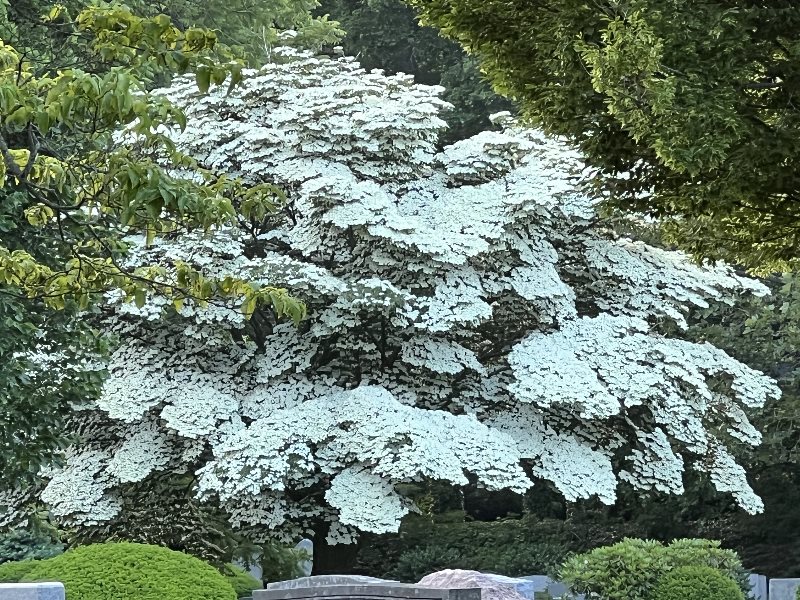
Tre #7
Camperdown Elm. Ulmus glabra camperdowni.
Ashley Davidoff
TheCommonVein.net
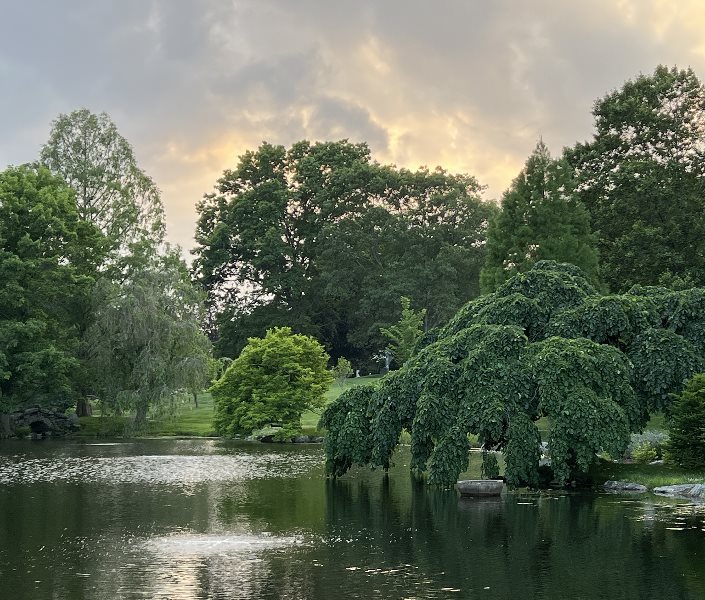
Ashley Davidoff TheCommonVein.net
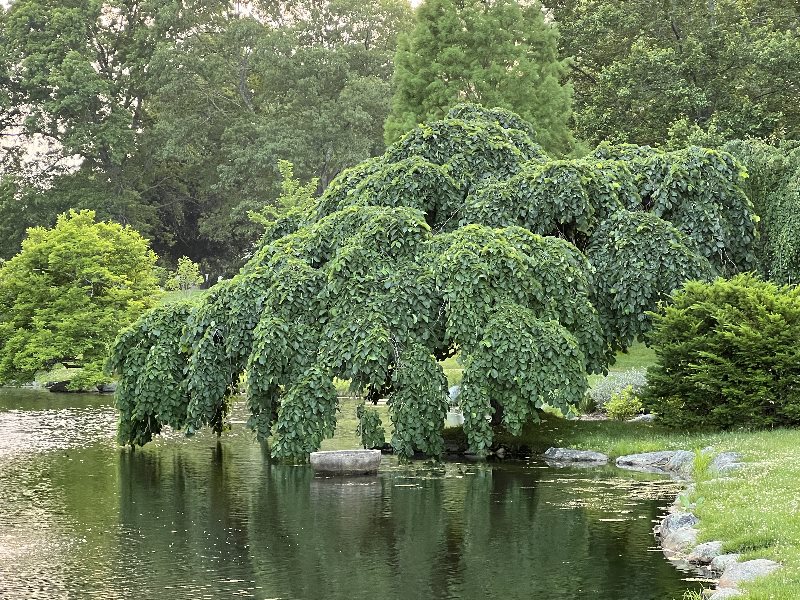
Ashley Davidoff TheCommonVein.net
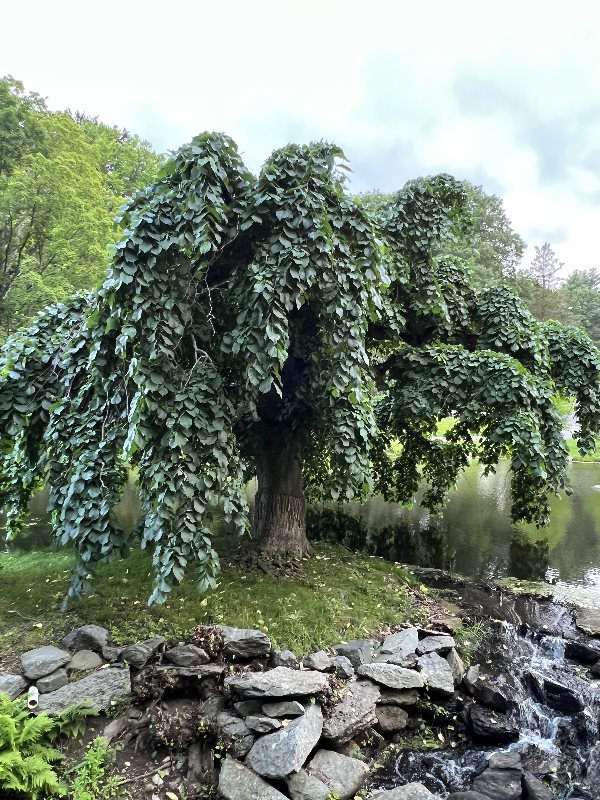
Ashley Davidoff TheCommonVein.net

Ashley Davidoff TheCommonVein.net
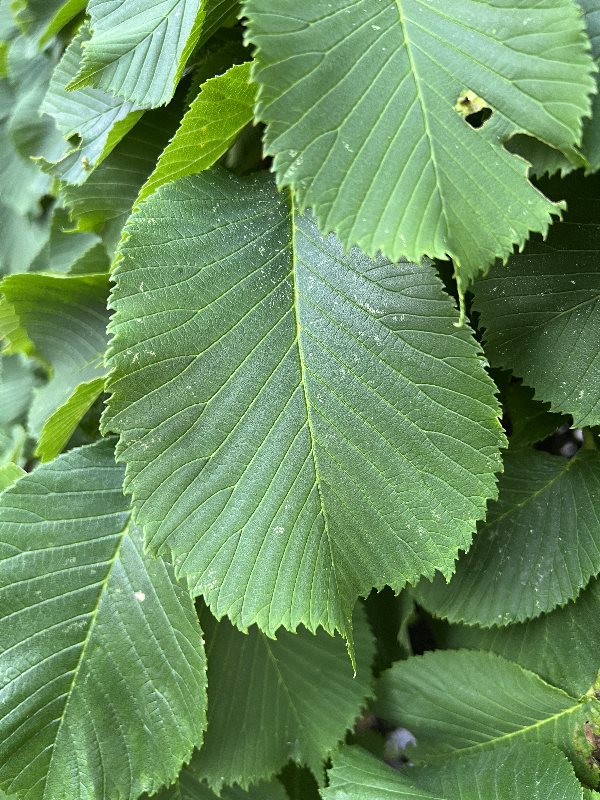
Ashley Davidoff TheCommonVein.net
The Camperdown Elm, also known as Ulmus glabra ‘Camperdownii’ or Weeping Elm, is a unique and eye-catching cultivar of the European Elm (Ulmus glabra). Here’s some information about the Camperdown Elm:
- Appearance: The Camperdown Elm is known for its distinct weeping habit. Instead of growing upright like traditional elms, its branches cascade downward, forming a graceful and pendulous canopy. The leaves are small, oval-shaped, and have a dark green color. The bark is gray and smooth.
- Size: This elm cultivar typically grows to a relatively small size, reaching a height of around 4-8 meters (13-26 feet) and spreading to a similar width. The canopy can extend even wider due to the weeping branches.
- Origin: The Camperdown Elm is a naturally occurring mutation of the European Elm, discovered at the Camperdown House in Dundee, Scotland, in the mid-19th century. The original tree was a graft sport and became popular due to its unique growth habit.
- Environmental requirements: Camperdown Elms thrive in full sun or partial shade. They are relatively adaptable to different soil types but prefer well-drained, moist soil. They can tolerate a range of pH levels and are moderately resistant to Dutch elm disease, although they may still be susceptible to other elm diseases and pests.
- Maintenance: Due to its weeping habit, the Camperdown Elm requires minimal pruning. Regular removal of dead or damaged branches is recommended. It is important to note that the Camperdown Elm is typically grafted onto rootstock, so care should be taken to prevent the rootstock from sending up suckers.
- Uses: The Camperdown Elm is primarily grown as an ornamental tree for its unique and picturesque form. It is often used as a specimen tree in parks, gardens, or larger landscapes. Its weeping branches create a striking visual display, especially when planted against a backdrop of contrasting foliage or structures.
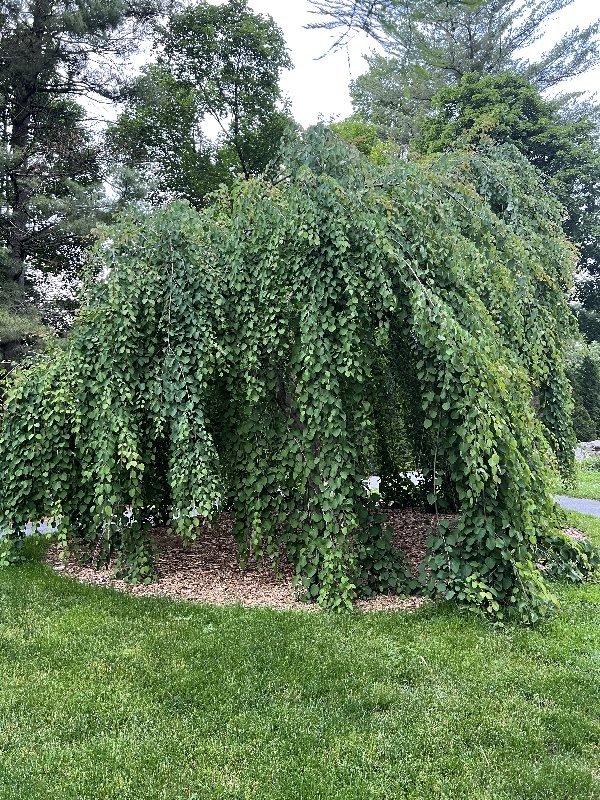
Ashley Davidoff TheCommonVein.net
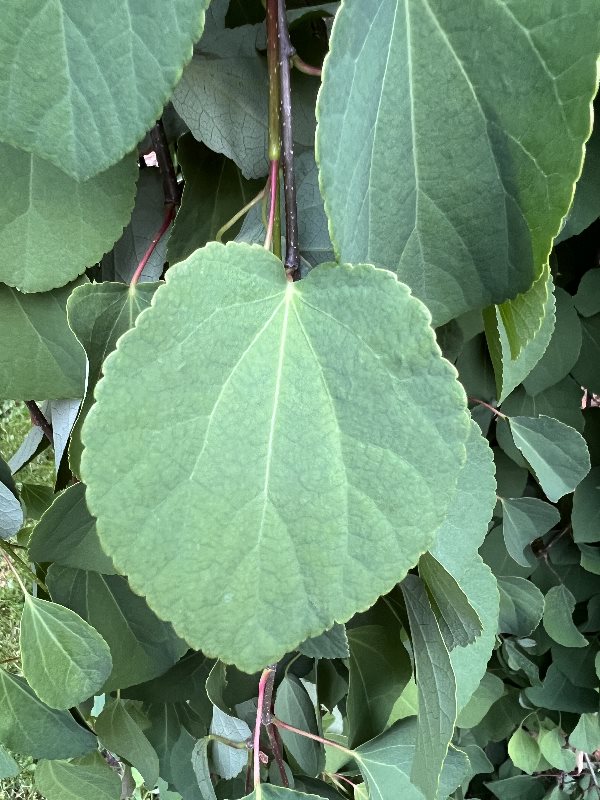
Ashley Davidoff TheCommonVein.net
The Weeping Katsura, scientifically known as Cercidiphyllum japonicum ‘Pendulum’, is a unique and attractive cultivar of the Katsura tree.
- Appearance: The Weeping Katsura is renowned for its graceful weeping habit. It features pendulous branches that cascade down, creating a beautiful cascading effect. The leaves are heart-shaped and emerge reddish-purple in spring, turning green in summer and showcasing stunning golden-orange to apricot hues in autumn. The fall foliage is particularly prized for its vibrant colors and sweet fragrance.
- Size: This cultivar is a small to medium-sized tree. It typically reaches a height of 4-6 meters (13-20 feet) and spreads to a similar width. The weeping branches can extend further, creating an elegant and eye-catching silhouette.
- Origin: The Weeping Katsura is a cultivated variety of the Katsura tree (Cercidiphyllum japonicum), native to Japan and China. Its unique weeping form is a result of selective breeding and propagation.
- Environmental requirements: Weeping Katsura trees prefer moist, well-drained soil that is rich in organic matter. They thrive in full sun to partial shade conditions. They are generally hardy and can tolerate a range of temperatures but may benefit from protection against strong winds.
- Maintenance: The Weeping Katsura is relatively low-maintenance. Regular watering during dry spells and mulching around the base of the tree can help maintain soil moisture. Pruning is typically minimal, focusing on removing any dead or crossing branches to maintain the desired form.
- Uses: The Weeping Katsura is primarily grown as an ornamental tree for its unique weeping habit and colorful foliage. It is often used as a focal point in gardens, landscapes, or even in large containers. The striking form and vibrant autumn colors make it a favorite among garden enthusiasts.
The Weeping Katsura is an exquisite tree that can add elegance, color, and interest to various outdoor spaces. Its weeping branches and beautiful foliage make it a captivating addition to any garden or landscape design.
